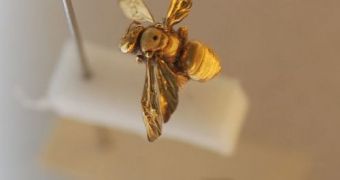Over the years, electron microscopes have generated a wealth of knowledge on many small things, but experts have always resented the fact that the instruments cannot be used to image living samples. The beams of electrons this type of microscope uses to get the job done is very energetic, and can, at best, easily disrupt the natural processes inside, say, a cell. Now, engineers at the Massachusetts Institute of Technology (MIT) have managed to devise improvements to the machine, which may help it be able to do just that in the very near future, the Institute announces.
Electron microscopes are also capable of distinguishing individual atoms, which makes them some of the most advanced observation tools in the world. The scanning variety can provide researchers with images that have depth of field, for instance, which would allow for a much better understanding of small structures. Now, MIT Assistant Professor Mehmet Fatih Yanik, together with his student William Putnam, has devised a type of electron microscope that relies on an established quantum mechanical measurement technique for its observation.
This method allows the microscope to sense its target remotely, which means that no damage can come to a sample. In effect, the scientists say, the electrons never touch the object that is being analyzed, so there is no risk of their energy wreaking havoc in the target. This innovation will bring forth a massive wave of knowledge, especially in the field of medicine, where experts will soon be able to watch the action of a certain molecule inside a living cell without disturbing its normal operations. Details of the technique appear in the October issue of the scientific journal Physical Review A.
In the quantum mechanical approach, a sample would be placed between two rings, on which an electron would reside. Naturally, the electron would “hop” from one ring to the other, in specific patterns. But, if a living cell was, for example, placed between the rings, then the electron would not be able to “jump” to the other ring, and would remain trapped on just one. This method allows for a single “pixel” of an image to be reviewed at a time. However, a computer piece of software is then used to piece all the pixels together, to create a high-resolution image of the targeted area.
“From my perspective, it has the potential to be a breakthrough for those working with sensitive samples, such as biological imaging. Also, in general terms I find his work intellectually exciting because it is not incremental but takes a quantum (excuse the pun) jump forward through creative thinking,” Harvard University Professor of Chemistry Charles Lieber, who is a renowned expert in nanoscale technologies, says. He has not been directly involved in the new research.

 14 DAY TRIAL //
14 DAY TRIAL //